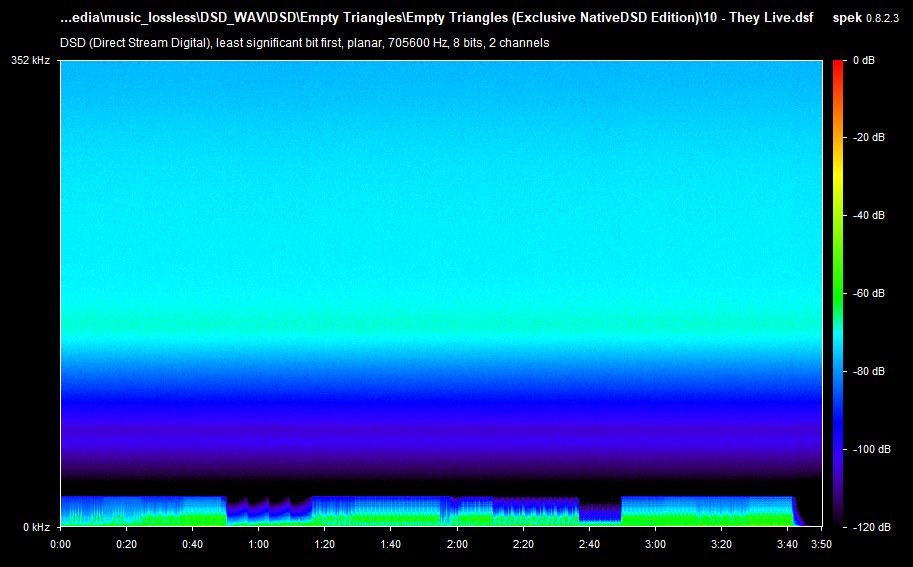| 3 minutes
The purpose of this blog series is to write out opinions that I rarely find the opportunity to talk about.
What is DSD?
The standard way to encode audio is PCM (pulse-code modulation), where you record samples of sound at a certain sample rate (such as 44100 Hz, meaning 44100 times per second) at a certain bit depth (such as 16 bits). The bit depth determines how much information can be stored in one sample. If those example numbers look familiar, that’s because they correspond to CD quality.
The primary difference in DSD (Direct Stream Digital) is that DSD is a single-bit format, which may sound limiting, but it is made up for with a drastically higher sample rate: in the case of the DSD64 format used on SACDs, 2822400 Hz, which is 64 times that of CD quality audio. There are also higher-end options such as DSD128, DSD256, and DSD512.

When it comes to spectograms, the most notable thing about a DSD is the high amount of ultrasonic noise, due to noise shaping and quantization noise (a form of digitisation error). The above spectogram is the DSD128 version of “They Live” from Empty Triangles’ Empty Triangles album.
DSD was originally designed as an archival format for old analog recordings, but it found its way to the SACD and various audiophile online stores selling mostly classical and other acoustic music.
What do I think?
To my ears, DSD is pointless. The real reason why a DSD file can sound amazing is because of the source, combined with skillful recording, mixing, and mastering, not the DSD format itself. If you can actually tell a difference that isn’t placebo or irrelevant, good for you. I cannot.
It’s cool to have fun and experiment with different ways of encoding sound, but what isn’t cool is misleading people about the format and making them think it’s somehow magical when it really isn’t. It’s just different.
Ok, so why buy it?
The actual reason why I buy DSD is because the format is interesting to me. That’s literally it. To me a quirky and technically interesting format is a fun choice when the DSD version of an album I would buy anyway costs either the same or a little bit more as the DXD version (which is just gasp regular 24-bit 352.8 kHz PCM often used for editing), or not that much more than the FLAC version of the same album when a DXD master isn’t used.
TL;DR
DSD is interesting, but hasn’t really got many practical benefits and is sometimes marketed like a miracle when it’s really not. If you are a pragmatic person, just get the cheaper FLAC version and call it a day. If you’re weird and find audio encoding interesting, sure, why not pick up a few DSD albums.
Bonus tip
If you end up buying or “obtaining” DSD audio, compress it with WavPack to reduce the space it takes.
Updates
Removed unnecessary focus on DSD128 in the why buy section, some general rewording, and replaced image with one that has correct spectogram colors. (2021-12-11)